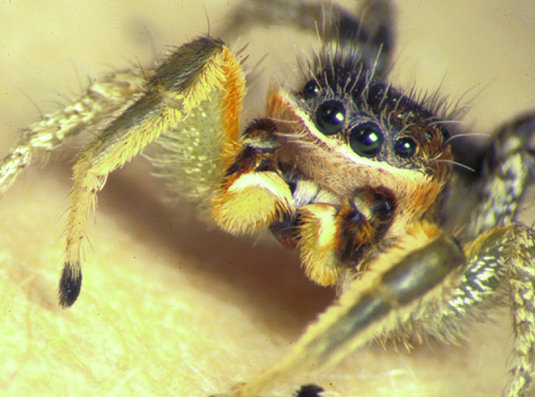
The H. tarsalis group comprises a species complex of five taxa, most of which are endemic to the region. The species included in this group are obviously closely-related, with the sole outlier being H. ophrys. All group members share a unique bipartite scale patterning of the male palpal cymbium and long, erect hairs below the principal eyes (see photo of H. mustaciata below). The nominate species, H. tarsalis, shows considerable geographic variation over its distributional range, and it might be the case that the species H. mustaciata, H. kawini, and H. gigas all represent extreme geographical variants of H. tarsalis (as hinted at by Griswold). All species prefer grassy habitats with sandy substrates - most beach habitats will have a member of the group.
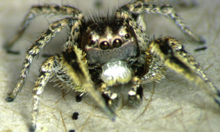
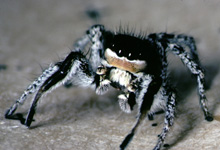
Monterey Co., CA
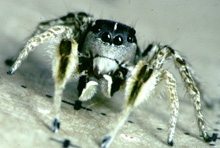
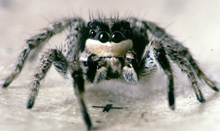
Alameda Co., CA
H. tarsalis - H. tarsalis is a taxonomically difficult, but evolutionarily interesting, species. The species is essentially an endemic of California and northern Baja, although populations can be found along the Colorado River (or tributaries) in AZ, NV, and UT. Common in a variety of grassy habitats in the west, but becoming more restricted to riparian oases in eastern deserts. Considerable variation exists from population to population in the nature of the cheliceral covering, the color and extent of a "mustache", and in male courtship behavior. Records from Griswold suggest the possibility of sympatry of two different forms of H. tarsalis in Imperial county. The specific status of different H. tarsalis forms with respect to H. mustaciata, H. gigas, and H. kawini requires more study.
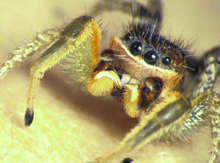
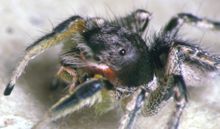
Mendocino Co., CA. ** Note long hairs below main eyes.
Plumas Co., CA
H.mustaciata - This species has a characteristic scale covering on the chelicerae. In addition, although H. mustaciata has the most extreme "mustache" in the group (formed by erect scales on the lateral edges of the clypeus), similar "mustaches" are found in some H. tarsalis populations, and to a lesser degree in H. kawini. Found in grassy habitats, Griswold cites the California distribution as "central and northern coastal ranges and adjacent coastal lowlands". Further collecting is necessary to document whether the Sierran population from Plumas county is truly disjunct.
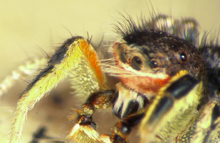
Mendocino Co., CA. ** Note cheliceral covering.
H.gigas - No photographs are available for this species. H. gigas is restricted to Isla Guadalupe, B.C.N. The species is rather large (an "island giant"), and apparently closely-related to H. tarsalis. In fact, Griswold suggests that the species might be derived from within southern CA forms of H. tarsalis.
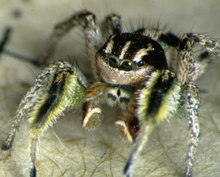
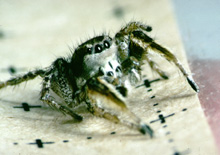
San Diego Co., CA
near Laguna Hanson, B.C.N.
H.kawini - Known from higher elevations of the Peninsular Ranges in southern California and northern Baja. The unique cheliceral covering, with long white scales surrounding black, scaleless, shiny areas, characterizes the species. The face is broad, similar to "mustached" forms of H. tarsalis. Fairly common in high-elevation grassy habitats.
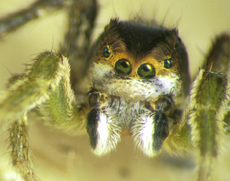
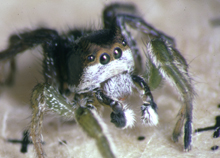
H.ophrys - This species has large "eyebrows" found in no other member of the species group (the clypeal and cheliceral coverings are also distinctive). A species of Pacific Northwest coastal habitats, H. ophrys gets into California as far south as Mendocino county. Geographical variation in crest size is apparent along the linear range of H. ophrys.